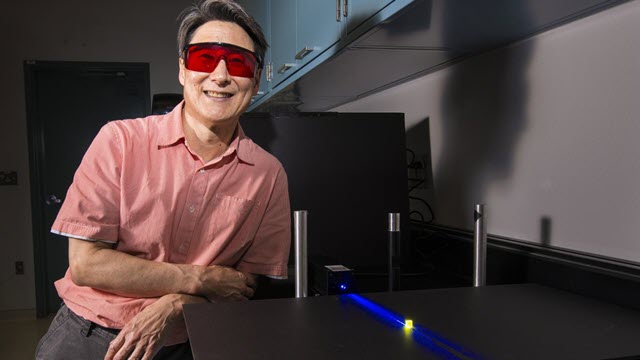Engineered Light Could Improve Health, Food
The inevitable broadening of LED usage could add value to society far greater than the energy saved in lighting homes and buildings
 Credit: Sandia National Laboratories, Randy Montoya
Credit: Sandia National Laboratories, Randy Montoya
People who believe light-emitting diodes, or LEDS, are just an efficient upgrade to the ordinary electric light bulb are stuck in their thinking, suggest Sandia National Laboratories researcher Jeff Tsao and colleagues from other institutions in a Nature "Perspectives" article published in late November.
"LED lighting is only in its infancy," the authors write. "We now stand at the threshold of what might be called engineered light."
Light intentionally controlled in time, space, and spectral content can reward not just human optics with better lighting but also can help regulate human health and productivity by eliciting various hormonal responses.
Moreover, with plants, the authors write, tailored LED wavelengths and intensities can efficiently stimulate their growth, alter their shapes, and increase their nutritional value, opening a new world of scientific and technological possibilities for indoor farming.
"That's not to ignore the integration of LEDs with the internet of things," Tsao said, "which is already happening with LED integration with electronics, sensors, and communications." The so-called internet of things refers to electronic circuits that can communicate with each other while embedded in a variety of everyday devices.
In short, the inevitable broadening of LED usage could add value to society far greater than the energy saved in lighting homes and buildings, the authors write.
